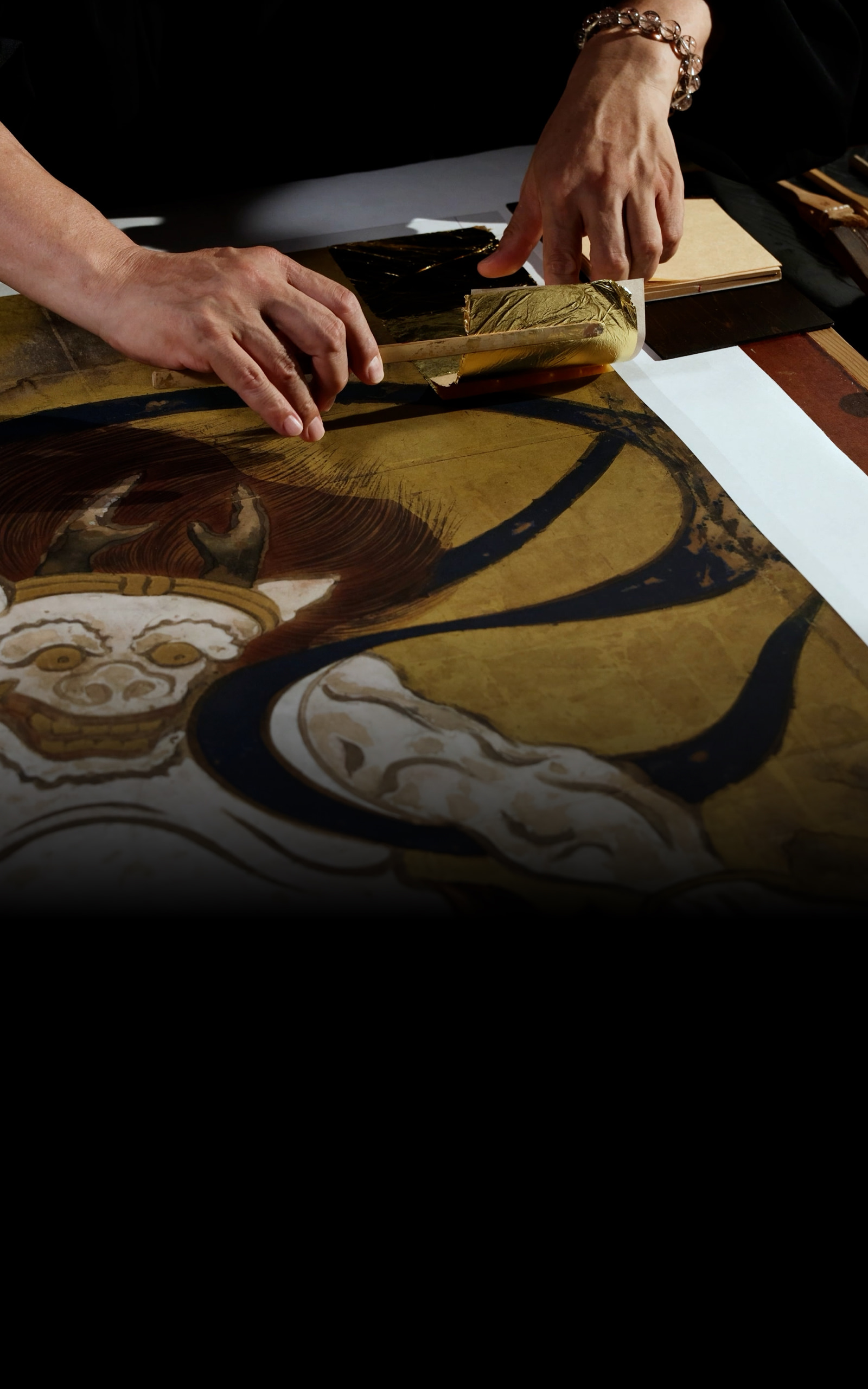Production Process
How the Works Are Created
With Canon‘s cutting-edge digital technology, every aspect of the beauty is printed out by capturing the subtle texture variations and even the feel of the original cultural assets.
We finish the high-resolution facsimiles with authentic craftsmanship, including gold foil and mounting, creating works that are as close to the originals as possible even in the smallest details.
*In order to view videos, it is necessary to consent to the use of cookies by our website.
If the videos are not displayed, please click the “Cookie Settings” and accept cookies.
1.Shooting
Our automatic multi-segmented image shooting allows us to capture highly detailed data while minimizing the burden on the cultural assets.
With Canon‘s cutting-edge cameras and the control system specially developed for the purpose, multi-segmented images of the assets are captured while automatically controlling the finest movements. The multi-segmented images are digitally stitched together on a computer. Image strain/distortion and other effects caused by lens aberration are also automatically corrected.

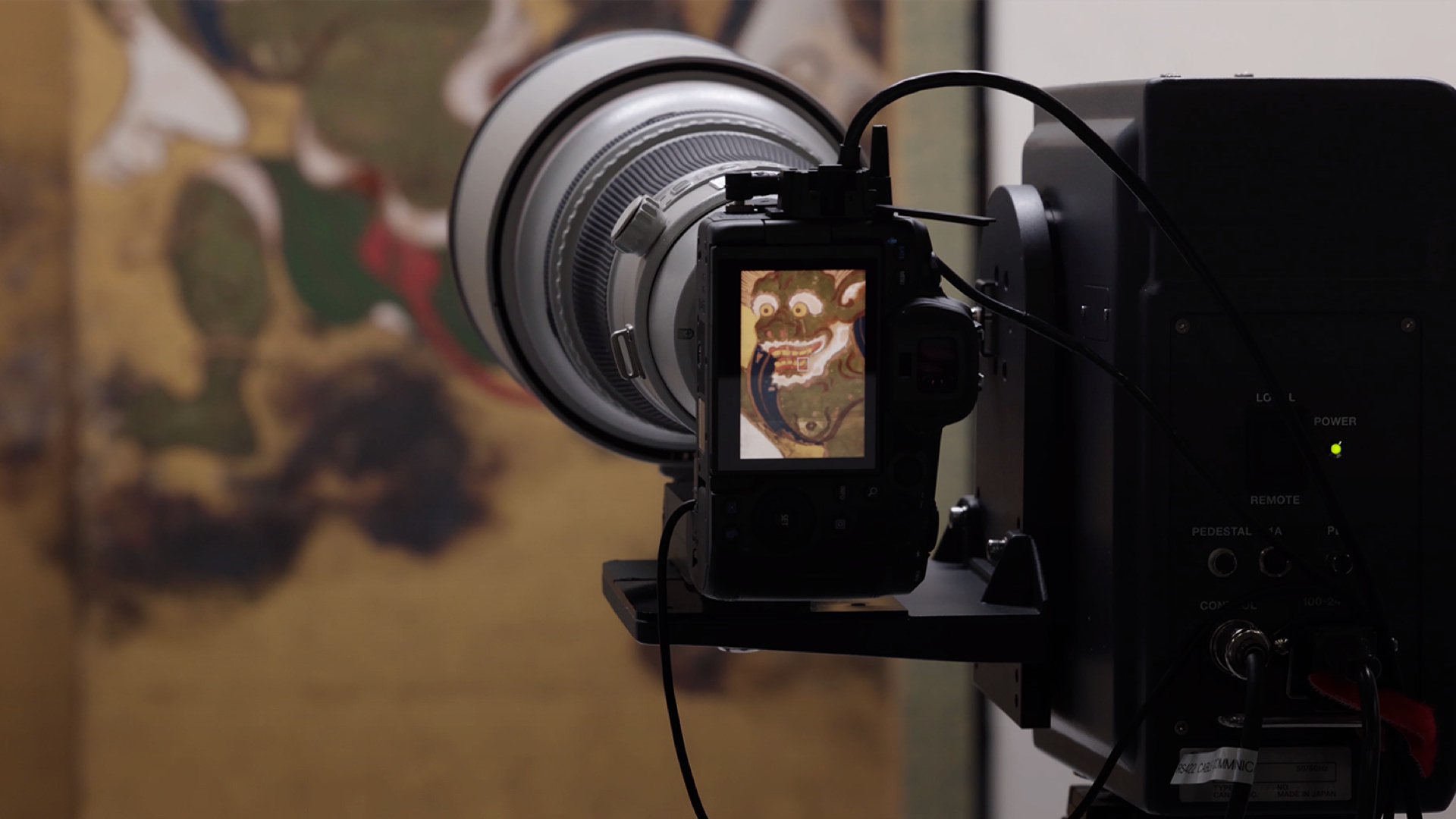
2.Color matching
Our high-precision color matching system reproduces colors that are true to the originals
An imaging process originally developed by Canon is applied to the captured high-precision digital data to correct color variations caused by differences in lighting. We print out the adjusted image data on site and match the colors while comparing them to the original works to achieve color reproduction that is true to the originals. The introduction of a high-precision color matching system in 2017 has enabled us to significantly reduce the time from photo shooting to color matching and minimize the burden on the cultural assets.
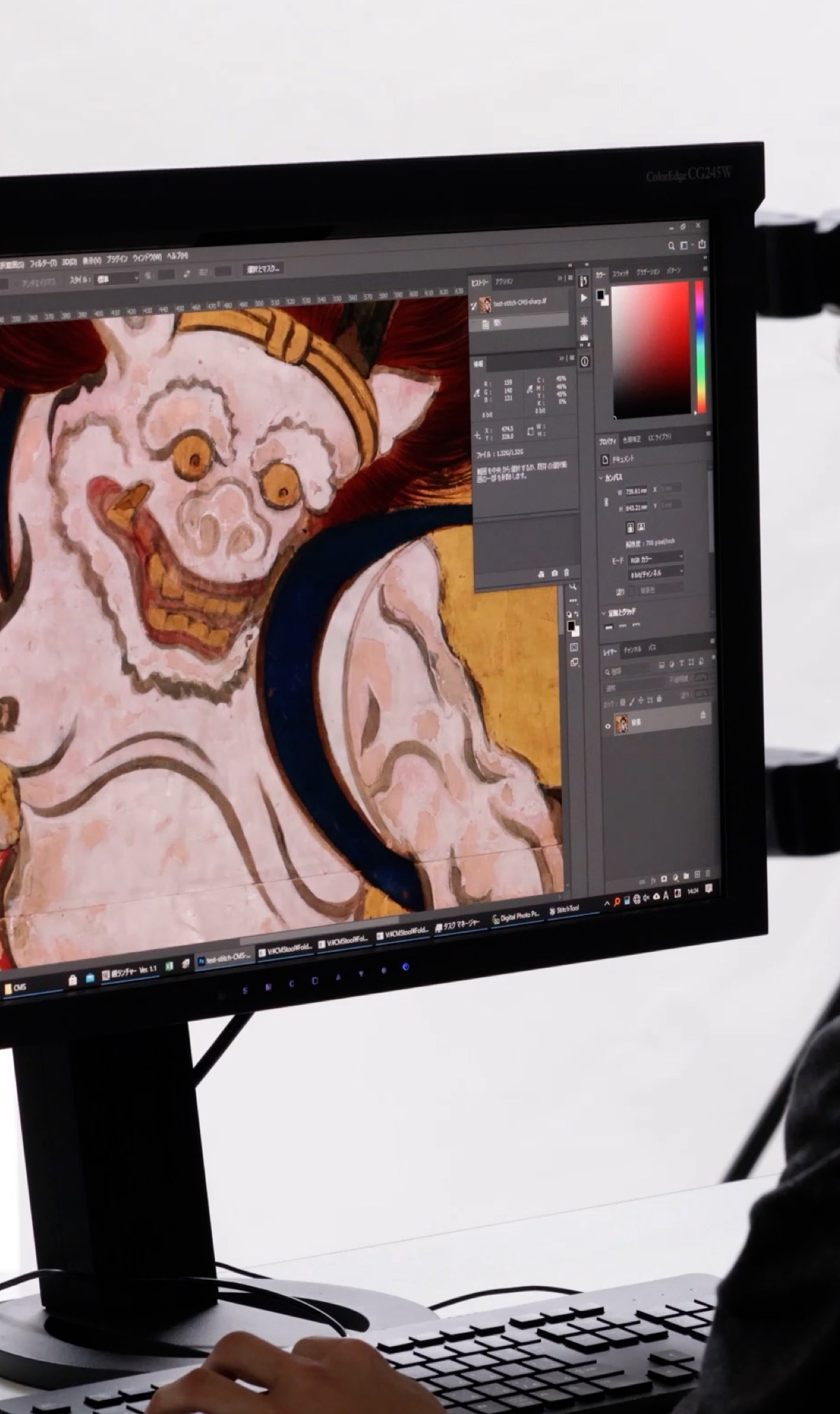

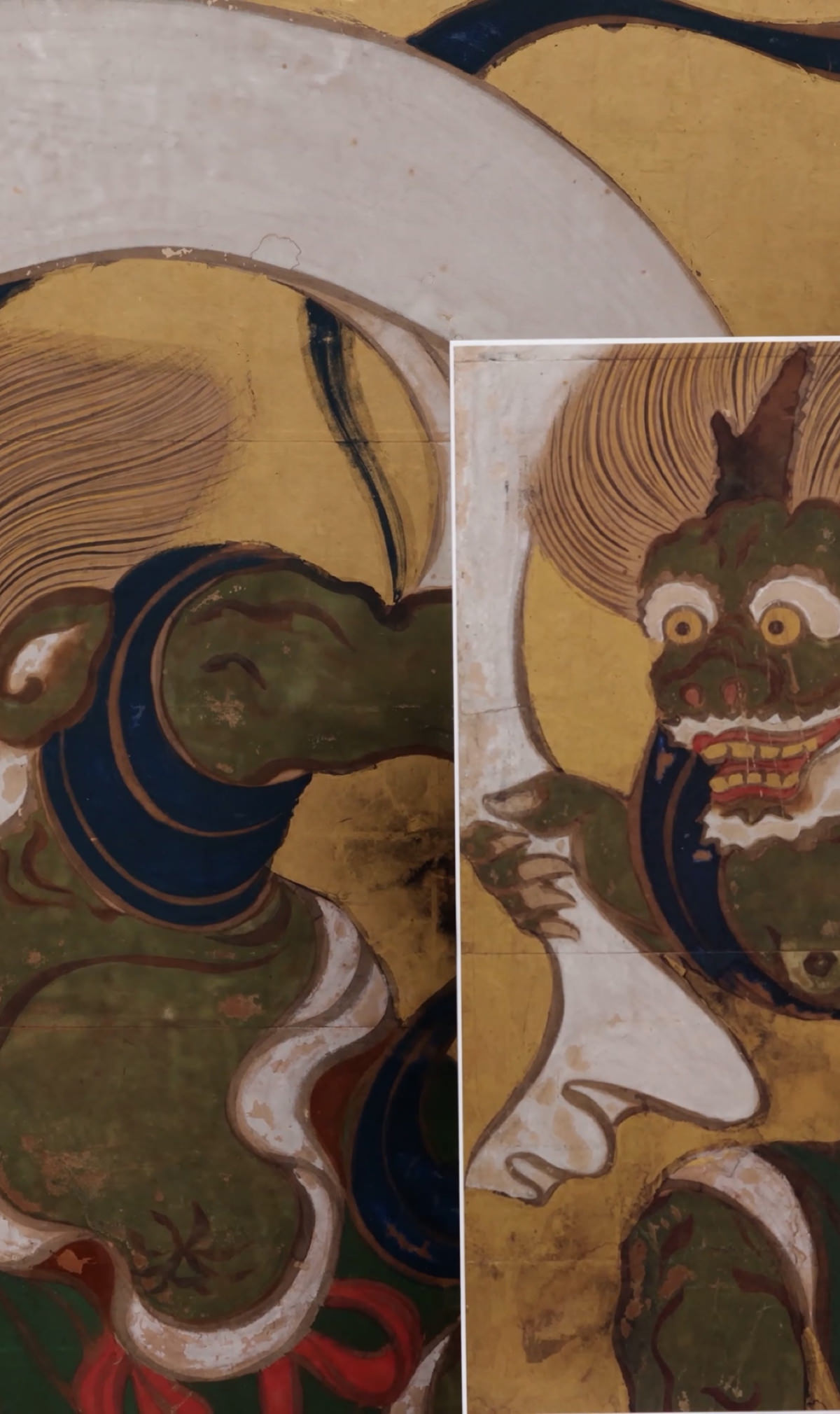
3.Printing
Exactly reproducing the subtle texture variations and the feel of the original cultural assets with our printing technology that is one of the best in the world
Ink and wash paintings may perhaps be the culmination of Japanese beauty. They express a dimensional depth through tonal subtleties and shading. Every aspect of this beauty is reproduced, from its subtle texture variations developed by age, to the feel of the original, through use of a large-format printer, the imagePROGRAF, equipped with a 12-color pigment ink system. Even the washi paper was specially adapted, through our own research and development, to make it suitable for printing cultural assets and applying gold leaf and other finishes. Development was also done to enable printing on silk paper, traditionally thought to be problematic.
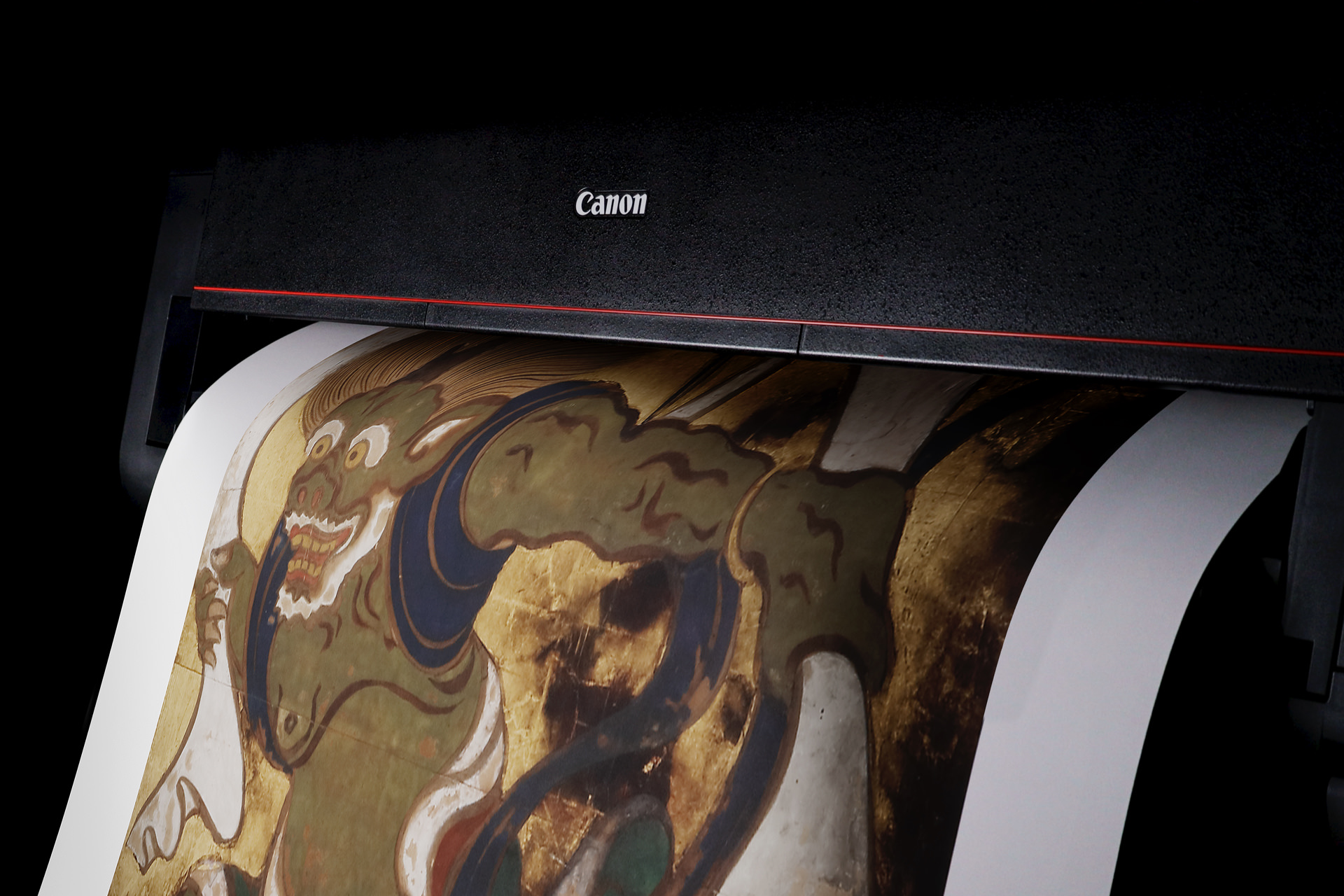
4.Gold leaf
Gold leaf Reproduced through time-honored traditional 'leaf' techniques
Reproducing the most significant feature used in Japanese cultural assets -- gold leaf, gold paint. The call for help in this reproduction process was answered by an authentic Nishijin craftsman and 'leaf' artist. The successive owners of each cultural asset have taken care to preserve their possessions, which, as a result, reflect their history through aging. This Project has made efforts to reproduce the 'era' of the work by laying emphasis on the level of `color fading` that has taken place. Care has been taken to observe and apply gold leaf that has been properly sized and shaped to reflect the era and location where the assets originate from.
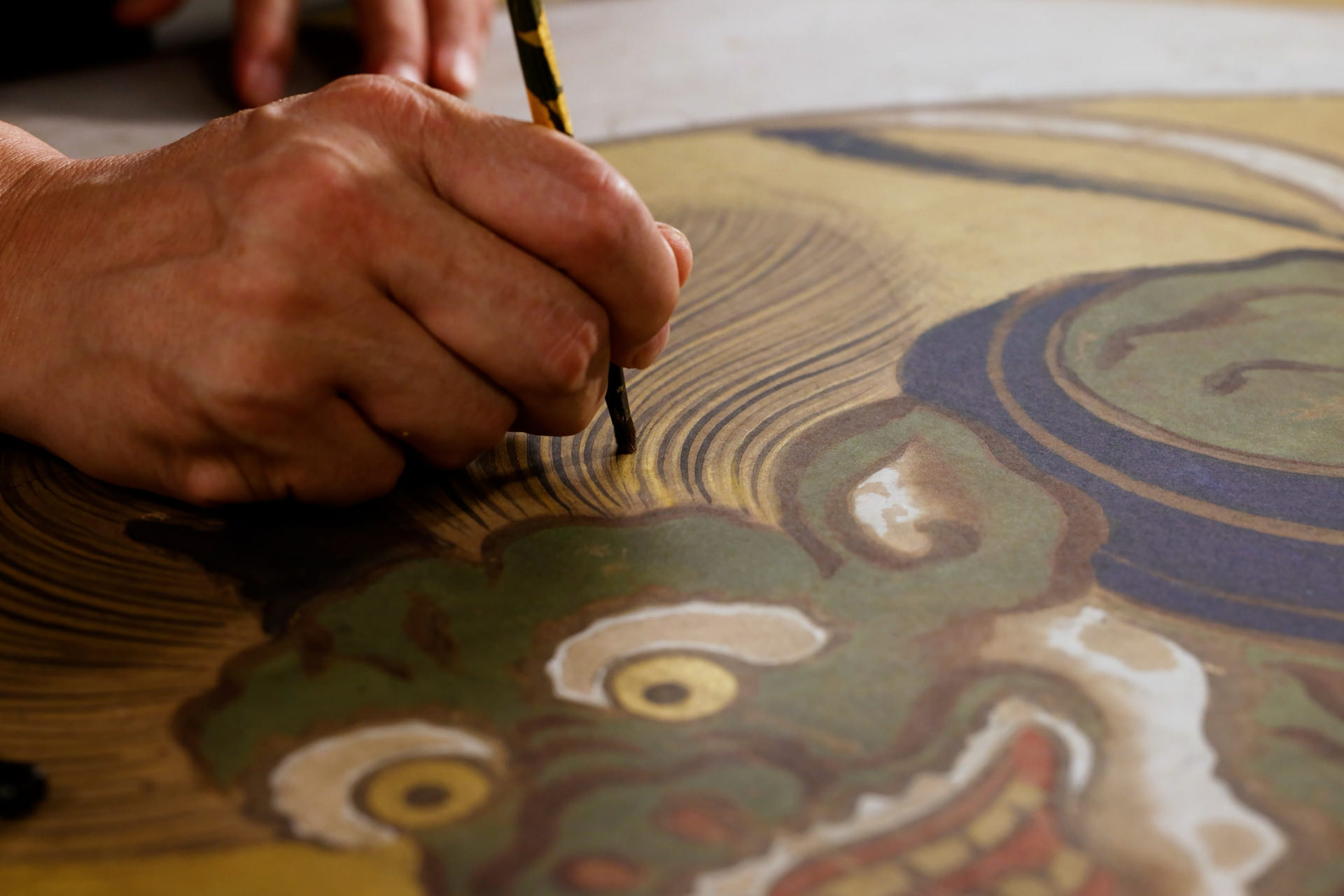
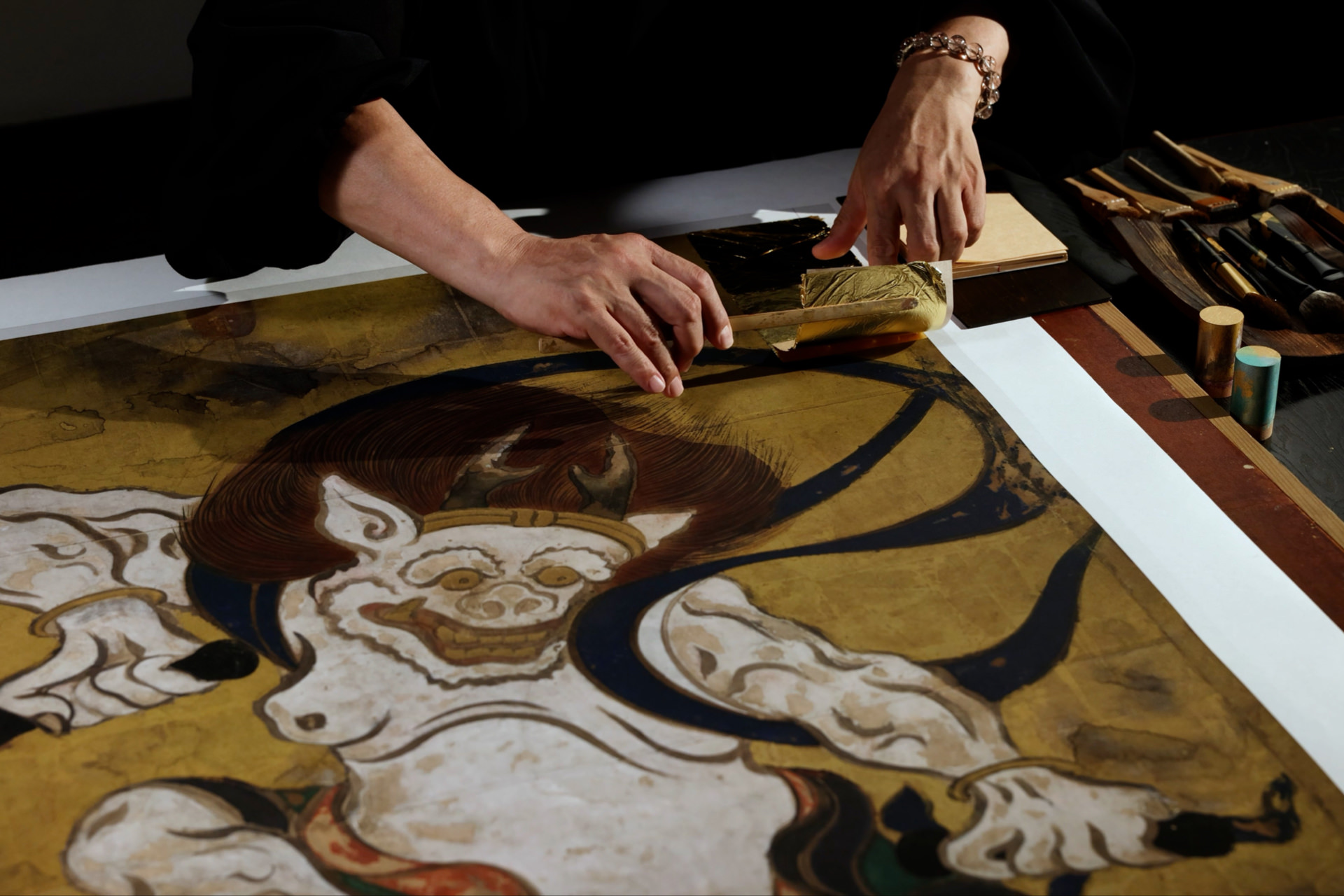
5.Mounting
Expressing the beauty of Japanese culture to the finest detail through the solid craftsmanship mastered in Kyoto
Once the work has been digitally printed on washi and finished with gold leaf, it must be mounted by a master craftsman. The final work is complete when it is mounted on an authentic Japanese sliding door or folding screen. This is done using the skills of an authentic craftsman, responsible for restoring mountings and various cultural assets in Kyoto from ancient times.
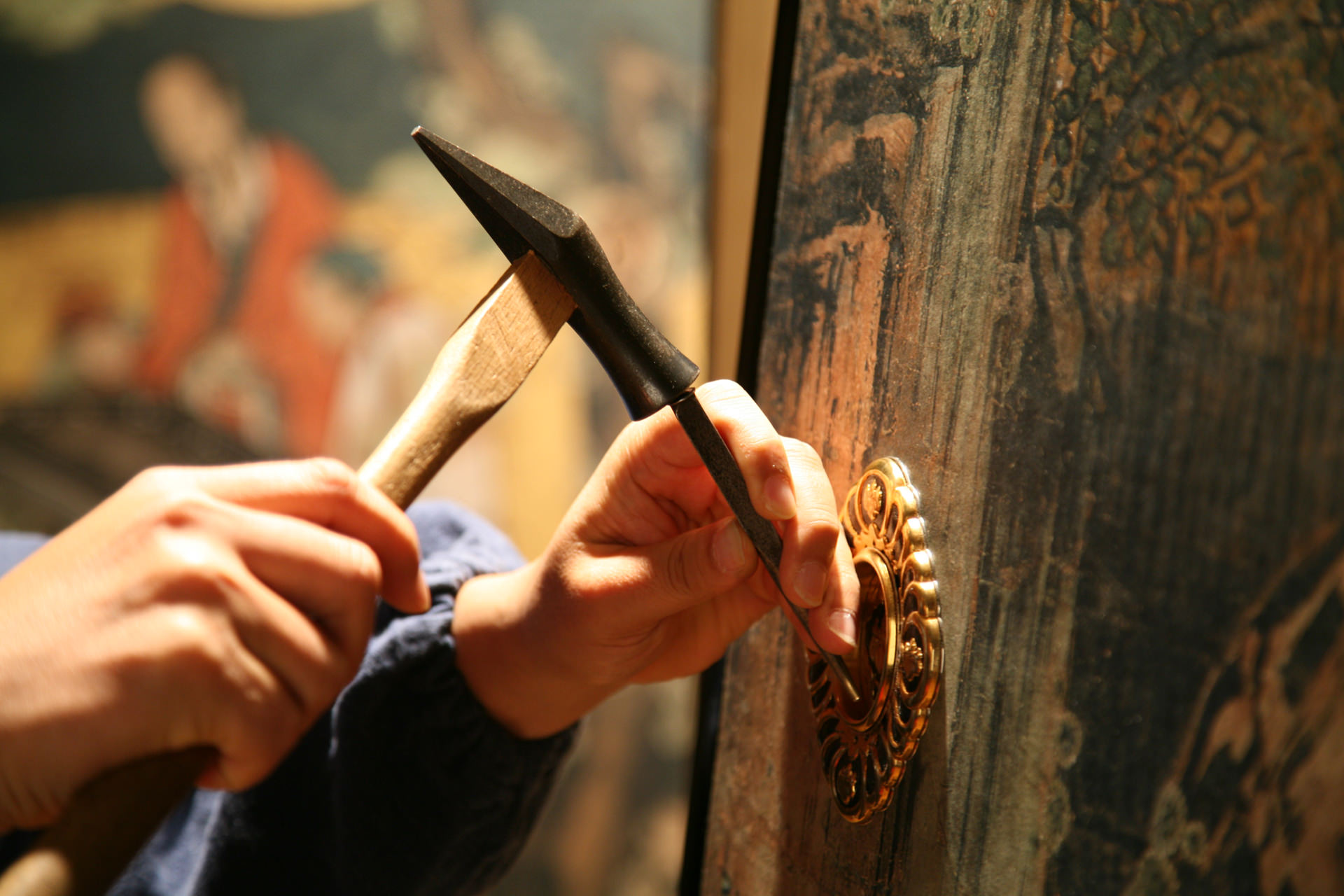
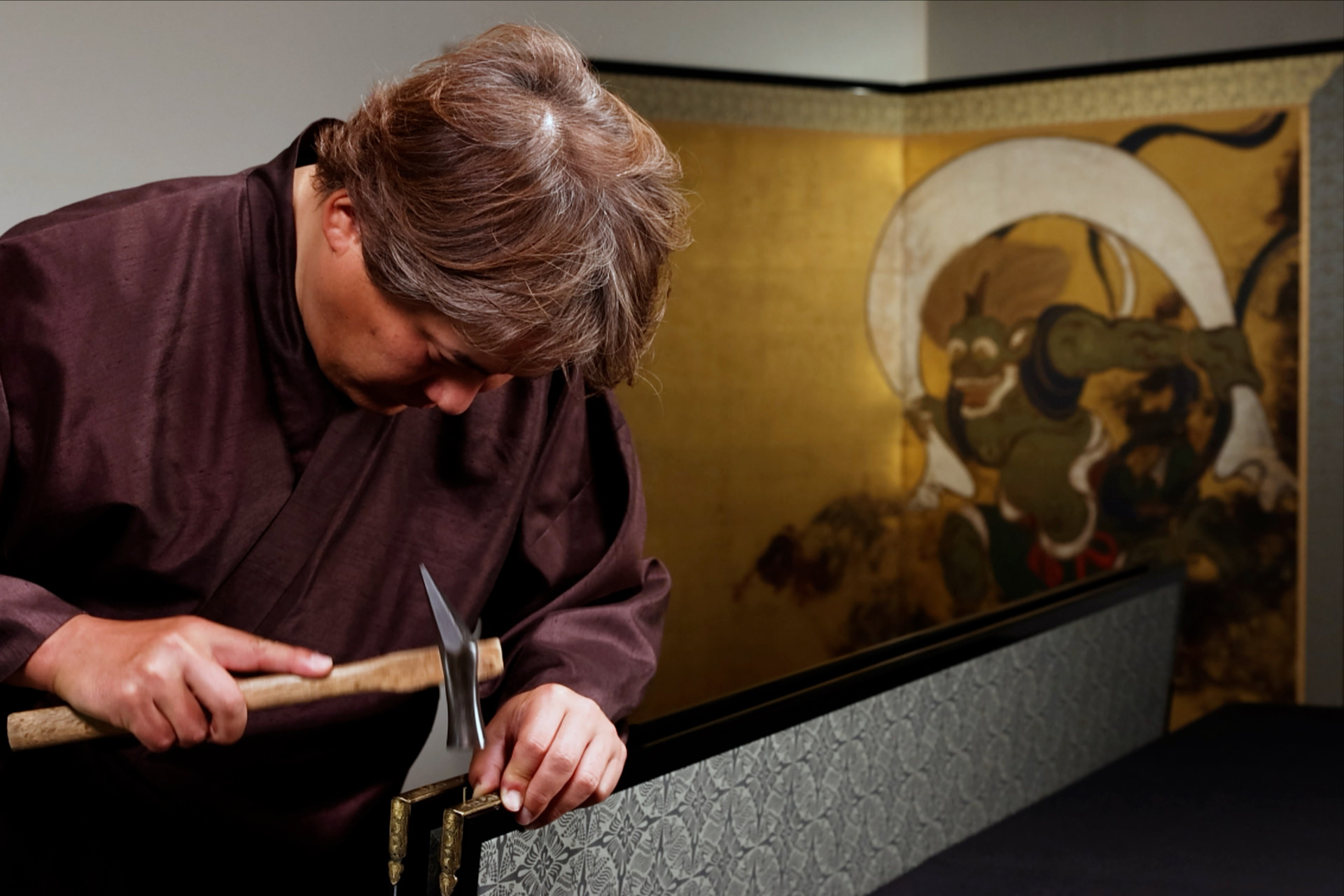
Issues and challenges
Facsimiles displayed in museums and other places need to be reproduced as true to the original cultural assets as possible. Because of this, the volume of high-precision digital data captured is massive. On the other hand, we need to reduce the photoshoot length and the number of color matching steps in production in order to minimize the burden on the original assets. For example, we captured high-precision data containing 5.4 billion pixels in total when creating the facsimile of the national treasure “Pine Forest” to produce a high-resolution facsimile that was the spitting image of the original. We continue to take on the challenges of reproducing works that are true to the originals and reducing the burden on the assets through the utilization of the latest digital technologies.
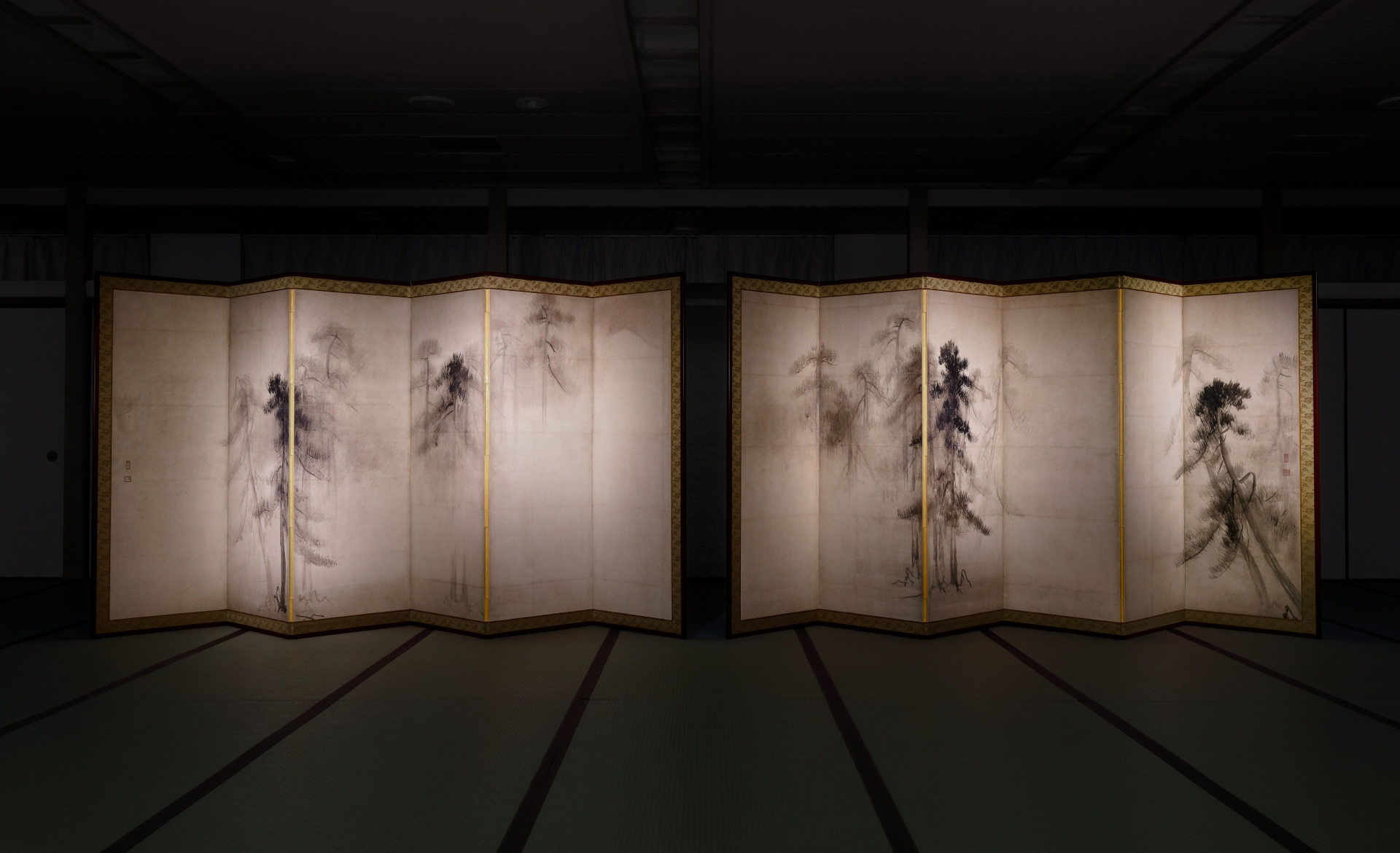
Hasegawa Tohaku
Recipient: National Institutes for Cultural Heritage
Depository: Tokyo National Museum (Stage1)
National Institutes for Cultural Heritage (Stage13)
Photo: From a series advertisement published in the February 2019 issue of Bungei Shunju
